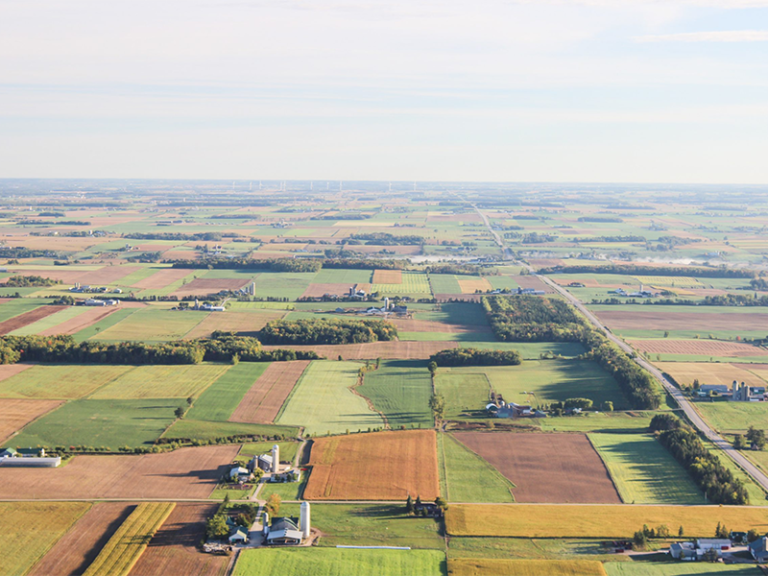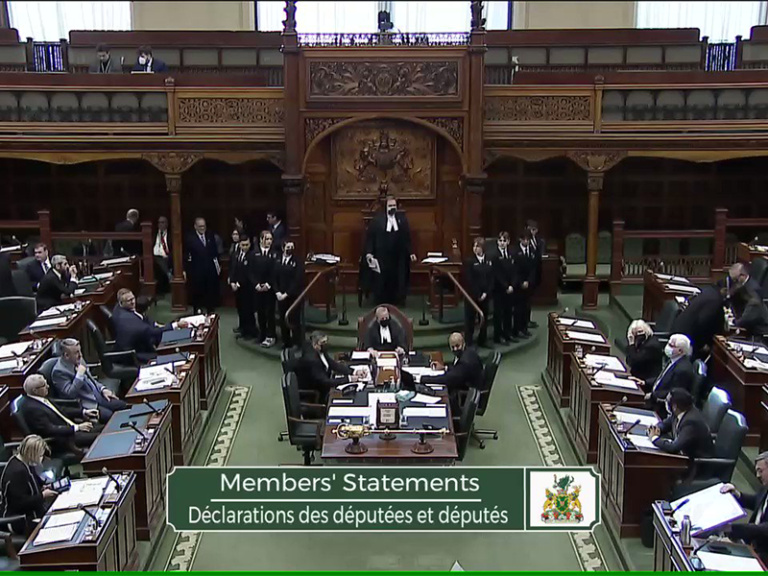First published: June 18, 2004
The following was submitted to The Port Hope Evening Guide the evening
of 6/16/04 in
response to a front cover news story about a small wind turbine built in
Roseneath.
The winds of change have arrived.
But what’s up in the air for wind advocates is that the sound of its
coming is either an unmitigated disaster or the best thing that could
ever have happened. And all because a small wind turbine got built in
Northumberland County.
The apparent erection of a wind ‘turbine’ under wind ‘mill’ bylaws in
Alnwick/Haldimand Township points to a ridiculous gap in provincial
planning and environmental services legislation, along with resulting
shortfalls in county and/or municipal bylaws governing local wind power
development.
The Port Hope Evening Guide deserves credit for its excellent community
coverage in first identifying the problems raised by unclear local
bylaws and then the outlining of the future far-reaching implications
where the gap in appropriate legislation reaches deep into the pockets
of tax payers and electricity consumers in the province.
While we have yet to discover exactly what has happened with the
70-foot-tall wind tower and nacelle erected by the Paterson’s neighbors
there in Alnwick/Haldimand the need for appropriate legislative grounds
for planning is startlingly apparent.
What has happened in Alnwick/Haldimand township simply points to the
fact that Ontario legislation is so far behind it can barely be seen to
be effective. And that while municipalities may back wind development
100 per cent at the local level many municipal councils are flying blind
without bylaw mechanisms to assist planning departments in making good
decisions.
Noise guidelines are, as Mrs. Paterson found out, controlled by the
province of Ontario, falling under a blanket clause that does not
specifically distinguish between noise from a wind turbine or that
produced by, say, an automotive manufacturing plant. Basically, the
province allows noise only within a certain level when it reaches a
home. This is a good thing.
Unfortunately the article in the weekend paper did not explicitly state
whether the Paterson’s had officially tested the noise level of the
offending wind turbine or what those levels were. That puts into
question whether their neighbors turbine noise level actually
contravenes the provincial standard.
It is a fine line in rural living where, expecting for things to be
quiet but for the chorus of crying cats, the baying of a local dogs and
the occassional underline of ‘moo’ in the night, a person is faced with
noise that is legal but entirely out of place for their place of
residence. Truly, this kind of noise is culturally accepted more by
people living in urban areas, our towns and cities, than people out in
the quiet country.
This is where our local politicians can benefit from strong planning
direction to tailor local bylaws for all sizes of wind turbine
constructions, from small home-based units to commercial sized public
and private developments. Which is why this issue is such a pain and can
ruin so much of the good done by wind advocates over the years. Anything
built now that threatens wind construction in general represents three
steps backward where one step has been taken forward.
Why we haven’t learned how to benefit from community ownership of
affordable electrical generation technology, and by extension produce
electricity as participants in the system rather than as consumers of
it, is unknown. But at the cusp of having nearly everyone in the
province understand how they can personally benefit from renewable
energy production and ownership it hurts like the dickens to see
politicians producing a hard line in law where things are already difficult.
What Sustainability Northumberland has learned in its affiliation with
the Ontario Sustainable Energy Association is that the regulatory
framework hasn’t matured very rapidly in Ontario. According to Melinda
Zytaruk, General manager of OSEA, communities are only now learning how
they can benefit economically with wind power but that “…current
policies and bylaws are prohibitive.”
In Prince Edward County, senior planner Jo-Anne Egan talks of
‘gyrations’ in trying to get a wind farm developed in the County despite
strong corporate support.
To illustrate, after two years of pre-meetings and legal wrangles, an
Ontario Municipal Board full-hearing will not be scheduled until
December of this year, at which point the County will know when it will
be able to move into the decision making process it needs to move
forward – likely sometime next year.
“It’s been quite a ride and it isn’t over yet,” she said. “It’s taking
forever.”
By contrast and extension the Exhibition Place wind turbine that was put
up in 1999 stands as a testament to the inaction of the province and
local government to work together on the issue of standardized planning
for community participation in electrical generation using today’s
available and affordable technology. With no Toronto city bylaw
specifically tailored to wind power construction the WindShare turbine
was built under the category of amusement structure/communications
structure. Now that’s funny, but I find it doubtful there are any
Carnival people setting up shop on, in or around the tower that holds
the nacelle up to the winds off Lake Ontario. To date there is still no
specific category for wind turbine construction in Toronto’s books.
Strangely enough, however, Port Hope’s good corporate citizen Cameco has
succeeded in developing wind power in Bruce County where it has
partnered with farmers to lease land. Where Cameco has partnered with
the private sector to build its renewable electrical generation
capabilities it has built the largest wind farm development in Ontario
to date. A whopping 9 mW capacity under the name Bruce Wind. The towns
of Ferndale, Tiverton and Port Albert have all worked to put advanced
bylaws in place so that wind is dealt with in a professional manner to
rival even the ‘amusement’ spectacle of Toronto’s first foray into wind
power.
The wind turbine that stands in Pickering was built in avoidance of
municipal bylaw hurdles because it was constructed under the auspices of
Ontario Power Generation and on lands owned by the corporation. No
bylaws had to be consulted.
Where the wind blows is the best place for a wind turbine, but gaps in
legislation give an unfair advantage to corporate land owners who can
bypass the lack of municipal planning direction, in effect enslaving
local Public Utilities Comissions to centralized control of electrical
generation construction in the absence of open ended treatment of all
groups or individuals interested in renewable energy ownership. This
puts out the farmer who wants to use a 40 square foot bit of land to
erect a turbine and sell to the grid, or the community group that can
see the future to lower electricity bills in owning a bit of generating
capacity.
Last month Sustainability Northumberland hosted a talk with Paul Gipe,
Acting Executive Director of the OSEA and himself a world-renowned wind
power expert who has consulted with governments internationally. Mr.
Gipe gave a presentation in Port Hope on advanced renewable wind
tariffs, the same tariffs the province of Prince Edward Island recently
announced it would use to target 100 per cent of its electrical
generation needs with wind power by 2015. According to Paul Ontario is
behind the eight ball.
To be fair, though, there are improvements on the horizon. But it isn’t
community concerns that are holding things up. In fact these are an
important cornerstone in minting appropriate bylaws that make everybody
happy. This should have been known in Northumberland County without
thinking about it. County government did an excellent job in planning
for garbage recycling and having ratepayers take on the extra cost of
sorting and routing garbage, but the county missed its opportunity to
make things right for community groups wishing to build big wind when
big wind was gaining ground. Garbage and green house gas (GHG) reduction
strategies are both responsibilities of local government. Big wind
qualifies.
According to David Smith, Senior Planner with Bruce County, the county
had a strong hand in the development of and implementation of planning
bylaws at the municipal level. He says the closer to home the bylaw is
the more in tune it is with local cultural mores, the demographic and
geographic makeup that drive citizen concerns. These are the same noise
and safety aspects explored by Mr. and Mrs. Paterson through the local
newspaper. And soon in township council chambers.
As a planner, Mr. Smith says it is unique demographic and geographical
differences tailor wind turbine planning while certain factors are
always part of the template upon which counties and the municipalities
within their borders can ground their legislative frameworks. One such
commonality is safety, he says, where bylaws, “protect people from a
falling tower or in that respect issues similar in concept.”
Within Ontario the Ministry of Housing and the Ministry of Energy have,
together, begun collecting information about municipalities that are now
in the midst of developing efficient policies for wind construction at
the local level.
As the province of Ontario tables legislation this week relating to the
Ontario Power Authority proposed by the provincial liberals two months
ago, Ontarians may finally have a say in how renewable energy
development will proceed in the province. The legislation is expected to
open doors in how residents of Ontario would like to detail who will
have the right to own generating equipment, how the government will deal
with contracts for independent generators, and, above all, how the
province will assist local decision makers so that all of this runs like
clockwork to ensure public safety, and ultimately, for wind advocates
and consumers, satisfaction.
In Prince Edward County (PEC), Northumberland’s closest neighbor engaged
in major wind development, the fight has raged on for a couple of years
since the county was first approached by Vision Quest Electric, a wind
electric private firm out of Calgary. Among the concerns in drafting
planning guidelines local visual and property issues have come into
play, but it is the provincial government that has caused planning
officials the most grief in drafting legislation.
In Bruce County, planning guidelines were heavily weighted by commercial
development concerns on 1.8 mW sized turbines on up, and where,
according to Mr. Smith, this focus could easily be taken because the
local population is not as large or as concentrated as in PEC.
Taken altogether wind power could potentially account for 30 per cent of
the Ontario base load generating capacity as early as 2015 by the
prediction of some experts. Who gets to play in the game and how easy it
is for them to implement safe affordable renewable energy technology are
both of paramount importance. The ability to get involved will save
everyone who does so a lot of money over a lifetime.
As things heat up in Alnwick/Haldimand and community wind continues to
be at threat because of the hurdles placed before it, remember that you
can always buy your electricity from corporations more interested in
infrastructure and generation for continued profit and the image of
environmental conciousness than in putting money back in your hand and
making it possible for individuals to participate on a level playing
field to achieve their environmental goals.
Sincerely,
Tim Pozza
Sustainability Northumberland


